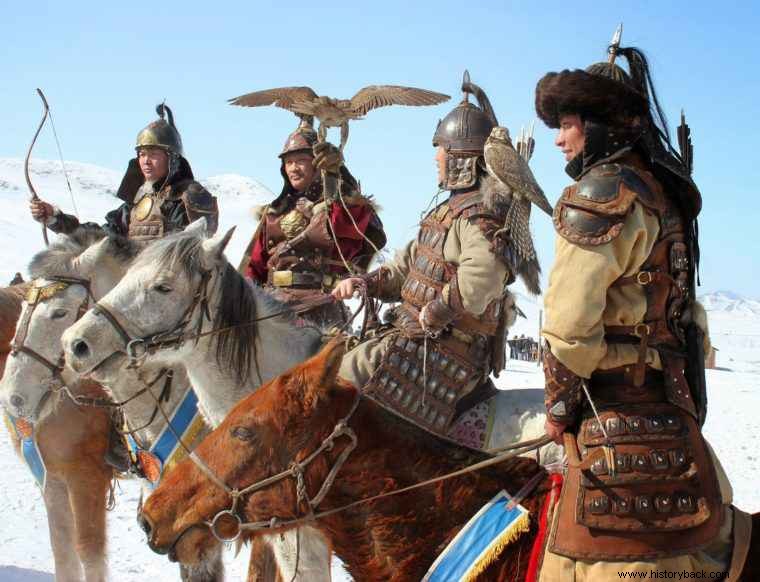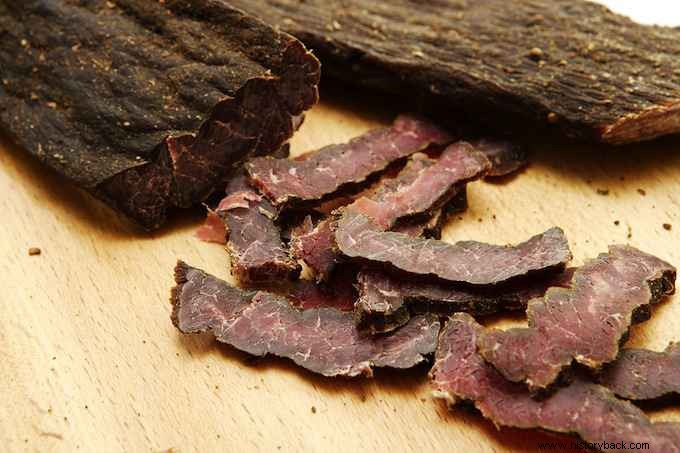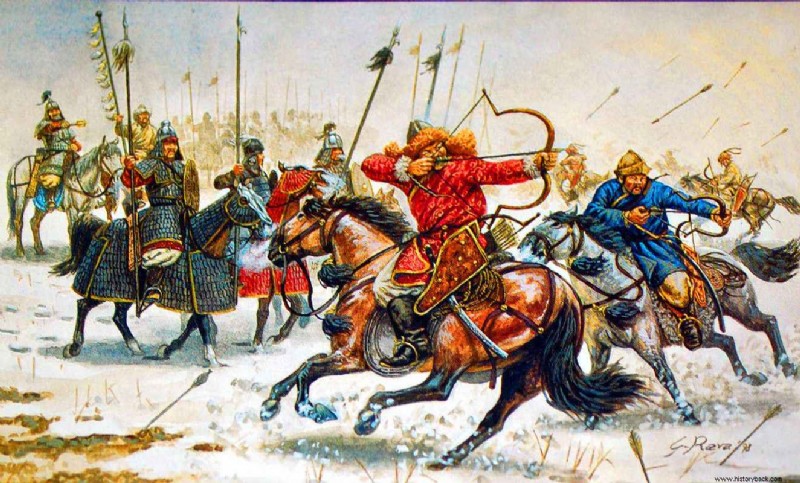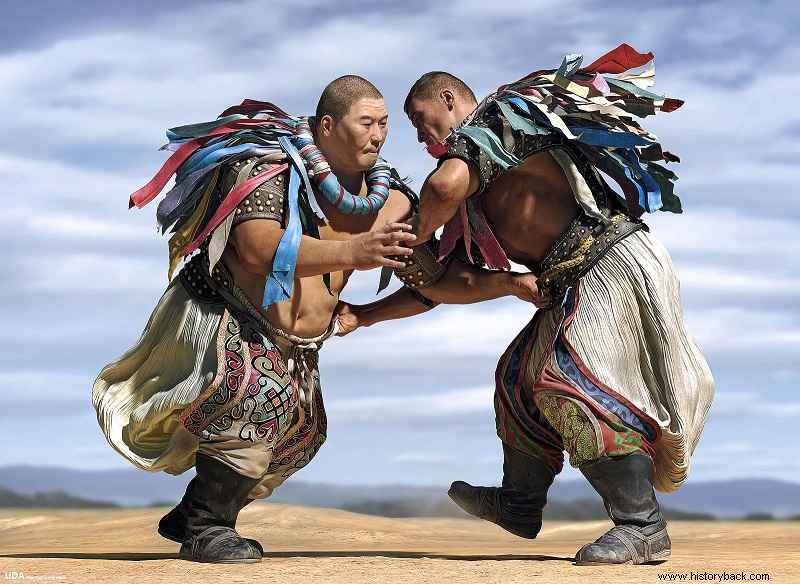The Mongols gathered under the command of Genghis Khan they were able to conquer a large part of Asia until they reached the gates of Europe. Their success was not exclusively linked to the skill of their commander in chief, but largely derived from the military organization that the Mongolian nomads were able to master and exploit to their advantage against adversaries of all kinds.
The Mongolian army which led to the success of Genghis Khan was characterized by extreme mobility, a discrete decision-making autonomy of the generals and the extraordinary resistance and attitude to war of its soldiers.
Each Mongolian soldier had 3-4 horses and it was his job to keep them healthy and ready for battle at all times. Changing horses while on the move allowed the Mongols to make very long crossings in record times and without ever stopping.
During the invasion of Hungary , the Mongol horsemen were able to cover 160 kilometers of rough terrain in a single day ; even if the unused horses still had to travel tens or hundreds of kilometers, they did so without any load on the back, remaining relatively cool until they were used by the rider.
The Mongols they often carried out reconnaissance during the winter, a period in which many ancient peoples preferred to stop all military activities due to the impractical conditions of the territory. While exploring the regions of today's Russia , exploited the frozen rivers as passable roads, reducing the necessary travel times following the traditional winter routes.
The Mongolian soldiers they were skilled knights, formidable archers and fought in small units capable of coordinating themselves in an incredibly effective way. All this was made possible by a combat training regime that started at an early age and by a certain freedom in the management of human resources by the commanders.

Each man was directly responsible for his horses and his weapons; the escape of a single man from the battle would have sentenced to death the entire team of 10 men to which he belonged; the warriors were bound to the supreme loyalty towards their superiors, even if the changes of alignment were not uncommon and the fights between clans and family members far from unusual.
Each group of 10 men consisted of six mounted archers and 4 knights armed with spears and equipped with stronger armor for hand-to-hand combat.
Each horse was protected by lamellar armor made up of five sections; Mongolian horses were relatively small but extremely hardy and adapted to steppe life. They were able to survive without a daily ration of food and to travel tens of kilometers without suffering too much from fatigue.
The horse was not only a means of combat but also a veritable mine of resources:it provided milk and meat (in extreme cases), leather for clothes, strings of bows and armor, its excrement was excellent for maintaining a live fire at night and horsehair could be used to build strong cordage.
The Mongol armies traveled light:every soldier knew how to survive by getting everything he needed from the earth or from horses. Each warrior traveled with fishing hooks and hunting tools, effectively making himself autonomous in procuring food. In extreme cases, a Mongolian soldier could survive for about a month by feeding on horse milk and blood extracted from the unused mounts that followed him.
The travel food supplied to each Mongolian knight was borts , strips of air-dried meat 2-3 centimeters thick and hard as wood. Once minced into very fine pieces, dried meat can be preserved intact for months, if not years.

The heaviest equipment was carried in chariot caravans, especially when it came to the tens of thousands of arrows to be used in battle. The limiting factor of these caravans was the supply of food and water for the pack animals. especially in the driest territories such as Syria or the great Hungarian plains.
The main weapon of the Mongolian knights was the composite bow , a mix of wood, horn and curtains capable of extraordinary performance. Each Mongolian archer carried at least 2 bows, one heavier for use on foot and the other relatively light for use on horseback. The Mongol quiver typically contained 60 arrows and both the archer and the horse carried at least one.

A Mongolian archer could make accurate shots up to 150-175 meters , while the non-targeted shot could reach 400 meters creating a barrier of arrows feared by many armies of the past and difficult to counter . The horse shooting generally took place during the gallop, when all four legs of the horse did not touch the ground.
As a close combat weapon, the Mongols used scimitars, spears and halberds. The scimitar allowed lethal cutting blows, but also lunges, and was about 1 meter long in total.
One of the innovations of Genghis Khan was the massive introduction of siege weapons, essential for the conquest of cities and strongholds. The siege engines were not built, disassembled and transported to the scene of the battle, as the Europeans did, but built directly in the site of the siege with materials found on the spot using the knowledge of engineers recruited from the prisoners of war.
The Mongol armies made extensive use of kharash , a tactic that involved sending prisoners of war to the front line .
In this way the prisoners suffered the full force of the initial confrontation or the hail of enemy arrows, preserving the precious lives of the Mongol warriors ready for a fierce and sudden counterattack.
The Mongols attached great importance to reconnaissance of the battlefield and of the enemy camp. They spied on the regions to be invaded for a long time to be prepared for any surprise:before the invasion of Eastern Europe, Batu and Subutai they sent spies almost 10 years before going to Europe , obtaining the mapping of the main communication routes and information on the resistance capacity of the various regions.
The Mongol army was creative and adaptable:in several cases it pushed to divert rivers to force virtually impregnable cities to surrender, or deliberately let part of the population flee to ensure that it was welcomed by cities it intended to conquer in order to weaken their food reserves and morale.

The Mongols they often offered the opportunity to surrender and pay tribute to avoid total destruction and pillage. They knew perfectly well that sedentary populations had a lot to lose from the destruction of a city and the looting of precious or essential goods.
The Mongol armies were also masters of deception :to make the enemy believe that they were outnumbered, they tied branches and bushes to their horses to raise dust in abundance, giving the impression that they were more numerous and that they were moving by the thousands towards the front.
In case of need, troops could quickly be split into formations of 10, 100, 1000 or 10000, and reunited just as quickly. These operations allowed to confuse the enemy, to easily change offensive maneuver and to feign retreat and then attack en masse or via ambushes.
